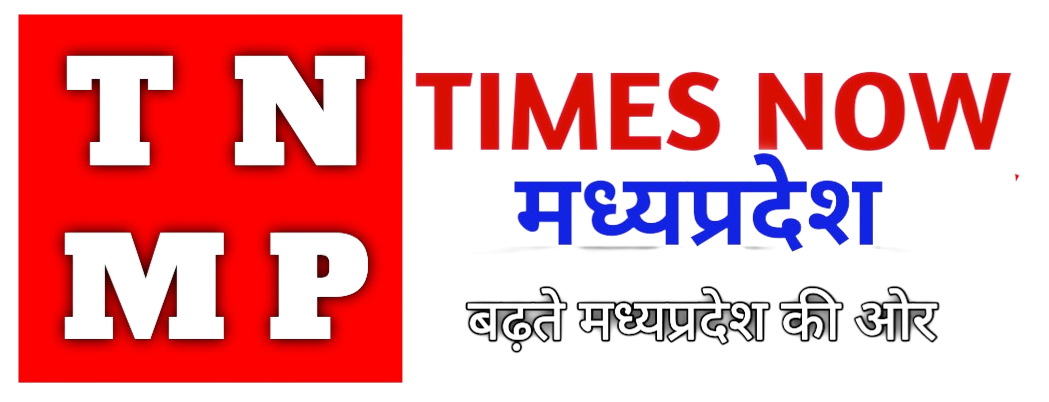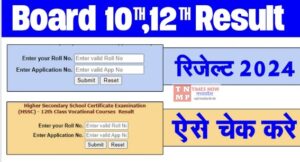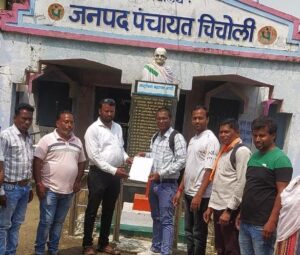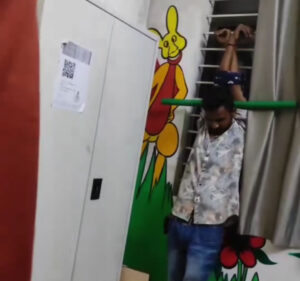MBA 1st Sem PPM notes by PRINCE CHOUDHARY

PPM NOTESFIRST SEM EXAMS
By:
PRINCE CHOUDHARY
UNIT-1
INTRODUCTION AND MEANING OF MANAGEMENT
- Management is necessaryforalltheorganizationirrespectiveofitssizenature and functions
- Theconceptofmanagementisnotrestrictedtobusinessorganizationbuteven non business organization needs to manage its functions
- Managementisaprogressiveanduniversallyacceptedfunction.noorganization can work smoothly and efficiently without management
DEFINITION OF MANAGEMENT
- Acc.toMaryParker:-“managementistheartofgettingtheworkdonethroughother people”.
- Acc.toLowtenceAppley:-“managementisthedevelopmentofpeopleandnotthe direction of things”.
- Acc.toHoroldKoonts:-“managementistheartofgettingthingsdonethroughothers and with formally organized groups”.
- Acc.toHenryFayol:-“managementistoforecast,toplan,toorganizeto,commandto coordinate and control activities from other”
CHARACTERISTICSANDFEATURESOFMANAGEMENT
- Management Is Goal Oriented :- it’s always aim to achieve the goal.
- Managementisauniversalactivity:-itperformallkindoforganizationalneedtype size purpose.
- Managementisanintangibleform:-itcannotbeseenortouchedbutitcanbefeel by goods or bad result of its effort.
- Management is a continuous process:– its not end
- Managementisagroupofactivity:-somanyactivitieslikeplanning,organizing staffing ,directing, controlling ets. Make perfect management.
OBJECTIVES/PURPOSE OF MANAGEMENT
- Organizationalactivities:-survival•profit•growth
2. Socialobjectives:-
- toprovideemploymentopportunities
- topreventenvironmentpollution
- tocontributeinrisingstandardofliving
3. Personalorindividualobjective:-
- Addequalrewardtoemployees
- toprovidehealthyatmosphere
- Toprovideparticipationinprofit.
IMPORTANCEOFMANAGEMENT
- Managementhelpinachievingorganizationalandpersonalgoal
- Managementincreasesefficiency
- Managementcreatesdynamicorganizations.
- Motivatesemployees
- Optimumutilizationofresources.
- ImprovescompaniesGoodwill
- Createshealthyworkingenvironment
- Managementhelpsindevelopmentofsociety.
Management is multidimensional
- Managementofwork:-planning,organizing,controlling.
- Managementofpeople:-stopping,directing,controlling.
- Managementofoperations:-production,sales,purchase.
DIFFERENCE BETWEEN EFFECTIVENESS AND EFFICIENCY
| EFFECTIVENESS | EFFICIENCY |
| Itefforttocompletionoftaskon time | It referred to completion of task correctlywithminimumcostwith no wastage of resource |
| ItProducingTargetproductionon time | ItproducingTargetproductionon minimum cost. |
SCOPE OF MANAGEMENT
- Productionmanagement
- Designingtheproduct
- Locationinlayoutofplantandbuilding
- Planningandcontrollingfactoryoperations
- Purchaseandstorageofmaterials
- Costandqualitycontrol
- Researchanddevelopment
HIERARCHY STRUCTURE OF MANAGEMENT
- Ceo
- Vicepresident
- Generalmanager
- Associategeneralmanager
- Directors
- Managers
- Associatemanagers
- Projectmanagers
- Supervisors
- Teamleaders
- Lineleaders
- Assistantlineleaders
- Productoperationandstudentinterns
ROLES RESPONSIBILITY OF MANAGERS
Rules of Managers:
- Planning: Formulating goals and strategies to guide organizational activities.
- Organizing:Structuring resources and tasks to achieve objectives efficiently.
- Leading:Influencing and motivating employees to contribute their best efforts.
- Controlling:Monitoringperformanceandmakingadjustmentstoensuregoal attainment.
- Decision-Making:Analyzingsituationsandmakingsoundchoicestoadvance objectives.
Responsibilities of Managers:
- SettingObjectives:Definingclearandachievablegoalsfortheteamor organization.
- ResourceAllocation:Efficientlydistributingandutilizingresourcestomeet goals.
- Communication:Facilitatingeffectiveinformation flowwithinthe organization.
- TeamDevelopment:Buildingandnurturingaskilledandmotivated workforce.
- Problem Solving: Addressing challenges and finding solutions to obstacles.
- Performance Evaluation: Assessing employee and organizational performance.
- Strategic Planning: Long-term vision and planning to ensure future success.
- DecisionImplementation:Executingchosenstrategiesanddecisions effectively.
SKILLS OF MANAGERS
- **Leadership:**Guidingandinspiringateamtowardcommongoals.
- **Communication:**Clearlyconveyingideasandinformation.
- **Decision-Making:**Analyzingsituationsandmakinginformedchoices.
- **ProblemSolving:**Findingeffectivesolutionstochallenges.
- **TimeManagement:**Efficientlyutilizingtimeandprioritizingtasks.
- **Adaptability:**Flexiblyadjustingtochangingcircumstances.
- **TeamBuilding:**Fosteringcollaborationandcohesionamongteammembers.
- **ConflictResolution:**Addressingandresolvingdisputeswithintheteam.
- **StrategicThinking:**Planningforlong-termsuccessandgrowth.
- **Empathy:**Understandingandconsideringothers’perspectivesandfeelings.
MANAGING PEOPLE IN NEW ERA
- Flexibility:**Beingadaptabletochangesandembracinginnovation.
- Inclusivity:**Valuingdiversityandensuringeveryonefeelsincluded.
- RemoteCollaboration:**Effectivelyleadingteamsinvirtualorhybridworksettings.
- TechSavvy:**Embracingandleveragingtechnologyforefficientoperations.
- ContinuousLearning:**Encouragingongoingdevelopmentandupskilling.
- Well-beingFocus:**Prioritizingthehealthandhappinessofemployees.
- FeedbackCulture:**Providingandreceivingconstructivefeedbackregularly.
- Empowerment:**Entrustingandenablingemployeestotakeownership.
- Purpose-DrivenLeadership:**Aligningactionswithameaningfulorganizationalpurpose.
- CommunicationMastery:**Skillfullyconveyinginformationandfosteringopendialogue.
CHALLENGES OF MANAGEMENT
- **ChangeManagement:**Adaptingtonewwaysofdoingthingscanbechallengingforboth leaders and teams.
- **Communication:**Ensuringclearandeffectivecommunicationtoavoid misunderstandings.
- **TeamDynamics:**Managingdiversepersonalitiesandensuringsmoothcollaboration.
- **TimeManagement:**Jugglingmultipletasksandprioritieswithinlimitedtime.
- **Decision-Making:**Makingchoicesthatbenefittheteamandorganizationcanbetough.
- **AdaptingtoTechnology:**Keepingupwithandleveragingtechnologyforefficiency.
- **ConflictResolution:**Addressingandresolvingdisagreementsamongteammembers.
- **EmployeeEngagement:**Keepingtheteammotivatedandcommittedtotheirwork.
- **Globalization:**Managingteamsandoperationsacrossdifferentculturesandtimezones.
- **BalancingPriorities:**Prioritizingtasksandresourcesforoptimalresults.
SCIENTIFIC MANAGEMENT BIO TAYLOR
- Scientificmanagementisamanagementtheorythatfocusesonimprovingefficiencyand productivity by analyzing and studying work process to find the most efficient way to complete our task
- ThistheorygivenbyMWTaylorin19thcenturyitinvolvedbreakingdowntaskedinsmall part studying each part individually and then using knowledge to improve efficiency
● principleofscientificmanagement
- Replacementofruleofthump(planning)
- Cooperation(equalityandhelpeachother)
- Developmentofworkersandselection(workgivenbyability)
- Maximumoutput(increaseefficiency)
- Distributionofwork(distributeworkbetweenemployees)
● Technics/elementsofscientificmanagement
- Scientificworkstudy(methodstudy,motionstudy,Timestudy,fatiguestudy)
- Standardization(madeproductbyknowingrecruitmentofcustomers)
- Differentialpieceratesystem(setTargetforworkers)
- Selectionandtraining(introduceyourworkerswithnewthingsdeveloporupdatetheir skills).
- Mentalrevolution(givethemguidancetraintheirmentalstateliketheyworkmore)
14PRINCIPLESOFHENRYFAYOL
- Divisionofwork
- Authorityandresponsibility
- Discipline
- Unityofcommand
- Unityofdirection
- Subordinationofindividualinteresttogeneralinterest
- Remunerationofemployee
- Centralization.decentralization
- Scalerchain
- Orders
- Equity
- Stabilityofpersonal
- Initiative
- Espritdecorp(increaseteamspirit)
CLASSICAL THOUGHT
Classicalmanagementthought,insimpleterms,emphasizesefficiency,structure,andorderin organizations. Key ideas include:
- **ScientificManagement:**Focusesonoptimizingtaskefficiencythroughsystematic analysis and standardization.
- **AdministrativeManagement:**Emphasizestheimportanceofclearorganizational structure and well-defined roles.
- **BureaucraticManagement:**Stressestheneedforaformalhierarchy,rules,and procedures for effective functioning.
Theseclassicalapproaches,developedintheearly20thcentury,aimedtoimproveproductivity and create more organized and controlled work environments.
NEO CLASSICAL THOUGHT
Neo-classicalmanagementthinking,insimpleterms,emphasizestheimportanceofhuman factors in organizations. It highlights:
- **HumanRelations:**Recognizingthesignificanceofemployeeneeds,motivations,and social interactions in the workplace.
- **SocialSystems:**Viewingorganizationsassocialsystemswherepeopleandrelationships play a crucial role.
- **MotivationandLeadership:**Focusingonleadershipstylesthatinspireandmotivate employees for better performance.
- **IndividualNeeds:**Understandingthatemployeeshavesocialandpsychologicalneeds that impact their work.
- **Teamwork:**Emphasizingcollaborationandeffectivecommunicationwithinteams.
Inessence,neo-classicalmanagementacknowledgesthehumanaspectoforganizations, striving to create a more people-centric and socially aware approach to management.
MODERN SCHOOL OF THOUGHT
Modernschoolsofthoughtinmanagementfocusonadaptingtochangingenvironmentsand valuing diverse perspectives. They emphasize flexibility, innovation, and collaboration. Key approaches include:
- **ContingencyTheory:**Tailoringmanagementpracticestofitspecificsituations.
- **SystemsTheory:**Viewingorganizationsasinterconnectedsystemswithvarious components.
- **HumanRelationsApproach:**Prioritizingemployeewell-beingandpositiveworkplace relationships.
- **TotalQualityManagement(TQM):**Continuousimprovementandqualityenhancement across all organizational processes.
- **StrategicManagement:**Long-termplanningandadaptingtoexternalopportunitiesand threats.
Theseapproacheshighlighttheimportanceofconsideringcontext,valuingpeople,and strategically navigating the complexities of the modern business landscape.
EARLYCONTRIBUTEINMANAGEMENT
Earlycontributionstomanagementincludethefoundationalworkoftheoristssuchas:
- **FrederickTaylor:**IntroducedScientificManagement,emphasizingefficiencythrough systematic observation and analysis of work processes.
- **HenriFayol:**DevelopedAdministrativeManagementprinciples,highlightingthe importance of organizational structure, authority, and management functions.
- **MaxWeber:**ContributedBureaucraticManagement,emphasizingaformalized organizational structure, rules, and impersonal relationships.
Theseearlythinkerspavedthewayfortheevolutionofmanagementpractices,shapingthefield and providing a basis for subsequent management theories.
FUNCTIONOFMANAGEMENT
Sure,herearethefivefunctionsofmanagementexplainedinsimple terms:
- **Planning:**Decidingwhatneedstobedoneandhowtodoit.It’slikemakingaroadmap for your goals.
- **Organizing:**Arrangingtasks,people,andresourcestoreachyourgoals.Thinkofitas setting up the game pieces on a board.
- **Leading:**Guidingandmotivatingyourteamtoworktogether.It’slikebeingacaptain, steering everyone in the same direction.
- **Controlling:**Checkingifeverythingisgoingaccordingtotheplan.Imagineadjustingthe sails to stay on course.
- **Decision-Making:**Choosingthebestoptionswhenfacedwithchallenges.It’slikepicking the right path when you reach a crossroads.
**POSDCORBSTANDSFOR:**HENRYFAYOL
- **P-Planning:**Decidingonthebestcourseofactionfor achieving organizational objectives.
- **O-Organizing:**Arrangingresources,tasks,andpeopleto implement the planned activities.
- **S-Staffing:**Selecting,training,anddevelopingindividualstofill the roles within the organization.
- **D-Directing:**Guidingandleadingemployeestoaccomplish the planned work.
- **Co-Coordinating:**Ensuringharmonyamongvariousactivities and parts of the organization.
- **R-Reporting:**Keepingeveryoneinformedabouttheprogress and performance.
- **B-Budgeting:**Allocatingresourcesefficientlytomeetthe organization’s goals.
UNIT-2
NATUREOFPLANNING
- **Forward-Looking:**Planninginvolveslookingintothefutureanddecidingwhatneedsto be done.
- **Goal-Oriented:**Itisfocusedonachievingspecificobjectivesortargets.
- **DecisionMaking:**Involvesmakingchoicesonthebestcourseofactiontoreachgoals.
- **Flexible:**Planscanbeadjustedandadaptedascircumstanceschange.
- **EfficientResourceUse:**Aimstomakethebestuseofavailableresourcesliketime, money, and personnel.
- **GuidanceforAction:**Providesaroadmapforactionstobetakeninthefuture.
- **CoordinatedEffort:**Helpsincoordinatingtheeffortsofdifferentindividualsor departments toward common goals.
- **ContinuousProcess:**Planningisanongoingprocess,notaone-timeevent.
- **RiskManagement:**Considerspotentialrisksanduncertaintiesinthedecision-making process.
- **IntegrativeFunction:**Connectsdifferentpartsofanorganizationtoworktogether harmoniously.
PURPOSE OF PLANNING
- **SetGoals:**Decidewhatyouwanttoachieve.
- **Organize:**Arrangetasksandresourcestoreachyourgoals.
- **SaveTime:**Planaheadtoworkmoreefficiently.
- **MakeBetterChoices:**Thinkaheadanddecideonthebestactions.
- **ReduceRisks:**Considerchallengesandplantoovercomethem.
- **CoordinateTeamwork:**Ensureeveryoneworkstogethersmoothly.
- **UseResourcesWisely:**Makethemostoftime,money,andpeople.
PROCESS OF PLANNING
- **SetGoals:**Decidewhatyouwanttoachieve.
- **GatherInformation:**Collectdetailsneededforyourplan.
- **IdentifyOptions:**Figureoutdifferentwaystoreachyourgoals.
- **EvaluateOptions:**Choosethebestpathbasedonadvantagesanddisadvantages.
- **MakeaPlan:**Outlinethestepsyou’lltaketoachieveyourgoals.
- **ImplementthePlan:**Putyourplanintoaction.
- **MonitorProgress:**Keepaneyeonhowthingsaregoing.
- **AdjustifNeeded:**Ifthingschange,tweakyourplanforbetterresults.
- **CelebrateSuccess:**Acknowledgeachievementsalongtheway
PRINCIPLE OF PLANNING
- **ClearObjectives:**Clearlydefinewhatyouwanttoachievethroughyourplan.
- **Flexibility:**Plansshouldbeadaptabletochangesandunforeseencircumstances.
- **UnityofDirection:**Ensurethateveryoneisworkingtowardthesamegoals.
- **Realistic:**Setachievablegoalsbasedonavailableresourcesandcapabilities.
- **Specificity:**Makeplansdetailedandspecific,leavingnoroomforambiguity.
- **Participation:**Involverelevantpeopleintheplanningprocessforbettercommitment.
- **Priority:**Identifyandprioritizetaskstofocusonwhatmattersmost.
- **Feedback:**Regularlyreviewandgetfeedbacktomakenecessaryadjustments.
- **Economy:**Efficientlyuseresourcestoachievegoalswithoutunnecessarywaste.
- **Continuity:**Planningisanongoingprocess;itdoesn’tendwhenimplementationbegins.
TYPES OF PLANNING
- **StrategicPlanning:**Long-termplanningforachievingoverallorganizationalgoals.
- **TacticalPlanning:**Intermediateplanningfocusingonspecificdepartmentsorareas.
- **OperationalPlanning:**Short-termplanningforday-to-daytasksandactivities.
- **ContingencyPlanning:**Preparingforunexpectedeventsoremergencies.
- **FinancialPlanning:**Managingfinancesandbudgetingforfutureexpenditures.
- **ProjectPlanning:**Organizingtasksandresourcesforaspecificproject.
- **BusinessPlanning:**Developingaplanforstartingorgrowingabusiness.
- **SuccessionPlanning:**Identifyinganddevelopingfutureleaderswithinanorganization.
- **CareerPlanning:**Settinggoalsandstepsforpersonalcareerdevelopment.
- **EnvironmentalPlanning:**Addressingsustainabilityandecologicalconsiderations.
ADVANTAGESOFPLANNING
- **ClearDirection:**Helpssetcleargoalsandobjectivesforbetterfocus.
- **Efficiency:**Organizestasksandresourcesforoptimalproductivity.
- **RiskManagement:**Anticipatesandaddressespotentialchallengesinadvance.
- **Coordination:**Ensureseveryoneisonthesamepage,workingtogetherharmoniously.
- **ResourceUtilization:**Maximizestheefficientuseoftime,money,andpersonnel.
- **Motivation:**Providesaroadmapthatcaninspireanddriveindividualsandteams.
- **Flexibility:**Allowsforadjustmentswhencircumstanceschange.
- **DecisionSupport:**Guidesinformeddecision-makingbasedoncarefulconsideration.
- **MeasurableProgress:**Facilitatestrackingandmeasuringprogresstowardgoals.
- **ContinuousImprovement:**Encourageslearningfromexperiencesandrefiningfuture plans.
LIMITATIONSOFPLANNING
- **Uncertainty:**Plansmaynotaccountforunexpectedchangesorevents.
- **Time-Consuming:**Creatingdetailedplanscanbetime-intensive.
- .**Costly:**Elaborateplanningprocessesmayincursignificantcosts.
- .**ResistancetoChange:**Peoplemayresistfollowingplansiftheydon’talignwiththeir preferences.
- **Inflexibility:**Someplansmaynotadaptwelltoevolvingsituations.
- **LimitedPredictability:**Futureoutcomesareinherentlyuncertain,impactingplan effectiveness.
- **DependencyonInformation:**Plansheavilyrelyonaccurateandtimelyinformation, which may not always be available.
TYPES OF OBJECTIVES
- **FinancialObjectives:**Relatedtofinancialperformanceandprofitabilitygoals.
- **StrategicObjectives:**Alignwiththeoveralldirectionandmissionoftheorganization.
- **OperationalObjectives:**Focusonday-to-daytasksandprocesseswithinthe organization.
- **TacticalObjectives:**Specificgoalsforindividualdepartmentsorteams.
- **Short-TermObjectives:**Targetstobeachievedinthenearfuture,typicallywithinayear.
- **Long-TermObjectives:**Goalssetforamoreextendedperiod,oftenspanningmultiple yrs.
- **QuantitativeObjectives:**Measurabletargets,usuallyexpressedinnumbersorpercent
- **QualitativeObjectives:**Goalsrelatedtotheimprovementofnon-measurableaspects like quality or reputation.
- **EmployeeDevelopmentObjectives:**Relatetoenhancingskillsandknowledgeofstaff.
- **InnovationObjectives:**Goalsfocusedonintroducingnewideas,products,or processes.
IMPORTANCEOFOBJECTIVES
- **Guidance:**Objectivesprovideacleardirection,guidingindividualsandteamstoward common goals.
- **Focus:**Theyhelpinprioritizingtasksandresources,ensuringeffortsareconcentratedon what truly matters.
- **Motivation:**Well-definedobjectivescaninspireandmotivateemployeesbygivingthema sense of purpose and achievement.
- **Evaluation:**Objectivesserveasbenchmarksformeasuringperformance,allowing organizations to assess their progress and success.
- **Coordination:**Clearobjectivespromotecoordinationamongdifferentdepartmentsand individuals, fostering a cohesive and efficient working environment.
SETTINGS OF OBJECTIVES
Settingobjectivesinmanagementiscrucialforguidinganorganization’seffortsandmeasuringsuccess. Objectives should be specific, measurable, achievable, relevant, and time-bound (SMART). Clear objectives provide direction, align efforts, and serve as a basis for evaluating performance.
MANAGEMENT BY OBJECTIVES
Management by Objectives (MBO) is a goal-setting and performance management approach whereemployeesandmanagersworktogethertodefine,set,andmonitorobjectives.Here’sa breakdown:
- **GoalSetting:**Employeesandmanagerscollaboratetoestablishspecific,measurable, achievable, relevant, and time-bound (SMART) objectives.
- **Participation:**Involveseveryoneinthegoal-settingprocess,ensuringthatobjectivesare understood and accepted.
- **ActionPlans:**Developactionplanstoachievethesetobjectives,outliningthesteps, resources, and timelines.
- **FeedbackandMonitoring:**Regularlyreviewprogresstowardobjectives.Managers provide feedback, and if needed, adjustments can be made to stay on track.
- **PerformanceAppraisal:**Attheendofthesetperiod,assessactualperformanceagainst the established objectives.
- **RewardsandRecognition:**Recognizeandrewardemployeesforachievingtheir objectives, fostering motivation and a sense of accomplishment.
WEAKNESS OF MBO
- **Rigidity:**MBO(ManagementbyObjectives)canbeinflexible,asitmaynoteasilyadaptto changes in the business environment or unexpected challenges.
- **OveremphasisonGoals:**Thereisariskofprioritizinggoalachievementoverother important aspects like teamwork, employee development, and innovation.
- **Time-Consuming:**Theprocessofsetting,monitoring,andevaluatingobjectivescanbe time-consuming, diverting attention from more immediate operational needs.
- **SubjectivityinEvaluation:**Assessingemployeeperformancebasedonobjectivescanbe subjective, leading to potential biases and unfair evaluations.
- **Short-TermFocus:**MBOoftenemphasizesshort-termgoals,potentiallyneglecting long-term strategic planning and organizational sustainability.
MEANINGOF DECISION MAKING IN MANAGEMENT:**
- **Definition:**Decisionmakinginmanagementreferstotheprocessofchoosingfrom alternative courses of action to achieve organizational goals.
- **CentralRole:**Itisacoremanagerialfunctionasleaderscontinuouslymakedecisionsat various levels to guide the organization.
- **InfluenceonPerformance:**Effectivedecisionmakingsignificantlyimpactsthesuccess and performance of an organization.
- **InherentRisk:**Decisionsinvolveuncertaintyandrisk,requiringmanagerstocarefully assess options before choosing a course of action.
- **ContinuousProcess:**Decisionmakingisnotaone-timeevent;itisadynamicand ongoing process in the management of any business.
**SIGNIFICANCEOF DECISION MAKING IN MANAGEMENT:**
- **StrategicDirection:**Decisionssetthestrategicdirectionoftheorganization,determining its path and future prospects.
- **ResourceAllocation:**Efficientdecisionmakingensuresoptimalallocationofresources, maximizing productivity and minimizing waste.
- **ProblemSolving:**Itisacriticaltoolforsolvingorganizationalproblems,whethertheyare routine or complex.
- **Adaptability:**Decisionmakingallowsorganizationstoadapttochangingenvironments and stay competitive.
- **EmployeeInvolvement:**Involvingemployeesinthedecision-makingprocessfostersa sense of ownership and commitment.
**TYPESOFDECISION MAKING:**
- **ProgrammedDecisions:**Routineandrepetitivedecisionsbasedonestablished procedures and rules
- **Non-programmedDecisions:**Uniqueandcomplexdecisionsrequiringatailoredapproach.
- **IndividualDecisionMaking:**Decisionsmadebyasinglepersonwithoutconsultingothers.
- **GroupDecisionMaking:**Involvesmultipleindividualscontributingtothedecision-making process.
- **StrategicDecisions:**High-leveldecisionsaffectingtheoveralldirectionoftheorganization.
**PROCESSOFDECISION MAKING:**
- **IdentificationoftheProblem:**Recognizingtheneedforadecisionduetoaproblemor opportunity.
- **GatheringInformation:**Collectingrelevantdataandinformationtounderstandthe situation.
- **GeneratingAlternatives:**Creatingpossiblesolutionsorcoursesofaction.
- **EvaluatingAlternatives:**Assessingeachoption’sprosandcons.
- **MakingtheDecision:**Choosingthemostsuitablealternativeandimplementingit.
**ADVANTAGESOFDECISIONMAKINGINMANAGEMENT:**
- **Efficiency:**Streamlinesoperationsandresourceutilization.
- **Innovation:**Fosterscreativityandinnovationinproblem-solving.
- **Empowerment:**Involvingemployeesindecisionmakingcanempowerandmotivatethem.
- **Adaptability:**Enablesorganizationstoadapttochangesinthebusinessenvironment.
- **Accountability:**Clarifiesresponsibilityasdecision-makersareaccountableforoutcomes.
**LIMITATIONSOFDECISIONMAKINGINMANAGEMENT:**
1.**IncompleteInformation:**2.**Bias:**3.**TimeConstraints:**4.**ResistancetoChange:**
UNIT-3
**MEANINGOF ORGANIZINGi
- Structuringresourcesandactivitiestoachieveorganizationalgoals.
- Creatingaframeworkforcoordinationandcollaboration.
- Assigningtasksandresponsibilitiestoindividualsorgroups.
- Establishingrelationshipsandhierarchywithintheorganization.
- Facilitatingefficiencyandeffectivenessinachievingobjectives.
**CONCEPTSOFORGANIZING
- **DivisionofLabor:**Specializationoftasksforincreasedefficiency.
- **ScalarChain:**Clearlinesofauthorityandcommunication.
- **UnityofCommand:**Eachemployeereportstoasinglesupervisor.
- **SpanofControl:**Numberofsubordinatesmanagedbyasupervisor.
- **Departmentalization:**Groupingofactivitiesbasedoncommonfunctionsorpurpose.
**PROCESSOF ORGANIZING:**
- **IdentifyingObjectives:**Understandingorganizationalgoalsandrequirements.
- **DivisionofWork:**Allocatingtasksandresponsibilitiestoindividualsorgroups.
- **EstablishingRelationships:**Definingroles,hierarchies,andreportingstructures.
- **AssigningResources:**Allocatinghuman,financial,andphysicalresources.
- **ContinuousMonitoring:**Regularlyevaluatingandadjustingorganizationalstructure.
**STRUCTUREOFORGANIZING
- **FunctionalStructure:**Groupingbasedonspecializedfunctions.
- **DivisionalStructure:**Organizingbyproducts,services,orgeographicregions.
- **MatrixStructure:**Combiningfunctionalanddivisionalstructures.
- **Team-BasedStructure:**Emphasizingcollaborationandteamwork.
- **NetworkStructure:**Flexiblearrangementswithexternalpartnersandresources.
MEANING OF DEPARTMENTALIZATION:**
- **Definition:**Departmentalizationistheprocessoforganizingandgroupingactivitiesor tasks within an organization into distinct departments or units based on certain criteria.
**NEEDFORDEPARTMENTALIZATION:**
- **Specialization:**Enablesspecializationbygroupingsimilartaskstogether,allowing employees to focus on specific skills or functions.
- **Efficiency:**Enhancesefficiencybystreamliningoperationswithinspecializeddepartments, improving coordination and workflow.
- **Coordination:**Facilitatesbettercoordinationastasksaregroupedbasedonsimilarities, reducing confusion and improving communication.
- **EffectiveManagement:**Simplifiesmanagementandsupervisionbybreakingdownthe organization into manageable units with clear responsibilities.
- **Flexibility:**Providesflexibilityfortheorganizationtoadapttochanges,aseach department can operate somewhat independently within its defined scope.
**CONSIDERATIONSOFDEPARTMENTALIZATION:**
- **Function:**Departmentscanbeformedbasedonfunctionsoractivities,groupingtogether tasks with similar purposes or processes.
- **ProductorService:**Organizingbyproductorserviceallowsforfocusedattentionon specific offerings, catering to different customer needs.
- **Geography:**Departmentalizingbygeographyisrelevantfororganizationswithoperations in different locations, considering regional variations.
- **Customer:**Departmentscanbestructuredaroundcustomertypesormarketsegments, tailoring services to distinct customer needs.
- **Process:**Organizingbyprocessinvolvesgroupingtasksbasedontheflowofwork, ensuring smooth transitions and efficient execution.
SPANOFMANAGEMENTINSIMPLEWORDS:**
Span of management, also known as span of control, refers to the number of subordinates or employeesthatamanagerorsupervisorcaneffectivelyoverseeanddirect.Insimplerterms,it indicates how many people report directly to a manager, influencing the level of control and communication within an organization. A narrow span of management means fewer subordinatespermanager,whileawidespanofmanagementindicatesmoresubordinatesper manager.
DEPARTMENTOFSPANOFMANAGEMENT:
- ConsiderationofSize:Thesizeofanorganizationofteninfluencestheappropriatespan of management, with larger organizations typically having wider spans to ensure effective coordination.
- Nature of Work: The complexity and nature of tasks influence the span of management; routinetasksmayallowforabroaderspan,whilecomplextasksmayrequireanarrower span.
- Managerial Skills: The competence and skills of managers impact the span of management,asexperiencedandskilledmanagersmayhandlealargernumberof subordinates effectively.
- Communication Channels: The span of management is influenced by the need for efficientcommunication;awiderspanmayleadtomoredirectcommunicationlines, while a narrower span may allow for more in-depth communication.
- Decentralization vs. Centralization: The level of decentralization in an organization affectsthespanofmanagement,withdecentralizedstructuresoftenhavingwiderspans as decision-making is distributed.
**LINE:**
- **Definition:**The”line”inorganizationalstructurerepresentsthedirectchainofcommand, where authority flows from top management down to the lowest levels of the organization.
- **Responsibility:**Individualsinthelinehavedirectresponsibilityforachievingthe organization’s goals and carrying out its core functions.
**STAFF:**
- **Definition:** The “staff” in organizational structure consists of individuals who provide support,advice,andexpertisetothelinefunctionswithouthavingdirectauthorityoverthem.
- **AdvisoryRole:**Staffmembersassistthelinebyofferingspecializedknowledge,guidance, and support, contributing to the overall effectiveness of the organization.
**LineRelationships:**
- **DirectChainofCommand:**Linerelationshipsrepresentthedirectflowofauthorityand responsibility from top management to lower organizational levels.
- **ClearHierarchy:**Establishesaclearhierarchywhereeachlevelhasauthorityoverthe level below, facilitating efficient decision-making.
- **ResponsibilityforGoals:**Individualsinlinepositionsdirectlycontributetoachievingthe organization’s goals and objectives.
- **Accountability:**Linerelationshipscreateclearlinesofaccountability,withindividualsheld responsible for their assigned tasks.
- **EfficientCommunication:**Directlinerelationshipspromoteswiftandeffective communication within the organizational structure.
**CONFLICTINLINE:**
- **CompetingGoals:**Conflictinlinepositionsmayarisefromindividualspursuingdifferent goals or priorities within the organization.
- **ResourceAllocation:**Disputesmayoccurovertheallocationofresources,suchas budget, personnel, or equipment.
- **RoleAmbiguity:**Unclearjobrolesandresponsibilitiescanleadtoconflictsasindividuals may step on each other’s toes.
- **CommunicationBreakdown:**Poorcommunicationormisunderstandingscancontribute to conflicts within line positions.
- **LeadershipStyles:**Differenc.esinleadershipstylesamongindividualsinlinerolesmay lead to clashes in decision-making approaches.
**AUTHORITYINLINE:**
- **Decision-MakingPower:**Linepositionsholdtheauthoritytomakedecisionswithintheir defined scope of responsibilities.
- **EnforcementofPolicies:**Individualsinlineroleshavetheauthoritytoenforce organizational policies and ensure compliance.
- **ResourceControl:**Lineauthorityincludescontroloverresourcessuchasbudgets, personnel, and equipment necessary for day-to-day operations.
- **Accountability:**Authorityinlinepositionsisoftenaccompaniedbyaccountabilityforthe outcomes and results achieved.
- **HierarchicalStructure:**Lineauthorityfollowsahierarchicalstructure,withhigherlevels having broader authority over lower levels.
**POWERINLINE:**
- **Influence:**Powerinlinepositionsisoftenassociatedwiththeabilitytoinfluenceothersto achieve organizational objectives.
- **Decision-MakingControl:**Individualswithpowerinlineroleshavecontrolovercrucial decisions affecting the organization.
- **ResourceAllocation:**Powerfulindividualsinlinepositionsmayhaveinfluenceoverthe allocation of resources within their domain.
- **LeadershipInfluence:**Powerisoftenlinkedtoleadershiproles,whereinfluentialleaders can guide and motivate their teams effectively.
- **OperationalImpact:**Linepowerdirectlyimpactstheday-to-dayoperationsofthe organization, shaping its overall functioning.
**RESPONSIBILITIESINLINE:**
- **TaskExecution:**Lineresponsibilitiesinvolvethedirectexecutionoftasksandactivities necessary to achieve organizational goals.
- **GoalAchievement:**Individualsinlinepositionsareresponsibleforcontributingtothe accomplishment of the organization’s overall objectives.
- **OperationalEfficiency:**Lineresponsibilitiesfocusonmaintainingoperationalefficiency and effectiveness within the assigned areas.
- **PerformanceAccountability:**Linepositionscomewiththeaccountabilitytodeliver results and meet performance expectations.
- **DecisionImplementation:**Thosewithlineresponsibilitiesareresponsiblefor implementing decisions made within their authority.
RELATIONSHIPSOFSTAFF:**
- **AdvisoryRole:**Staffmembersmaintainasupportiveandadvisoryrelationshipwithline functions, offering expertise and assistance.
- **Collaboration:**Effectivecollaborationbetweenstaffandlineiscrucialforachieving organizational goals and addressing challenges.
- **Communication:**Openandtransparentcommunicationisessentialtoensurethatstaff insights and recommendations are effectively conveyed to the line.
**CONFLICTINVOLVINGSTAFF:**
- **RoleConflicts:**Conflictsmayariseifthere’samisunderstandingordisagreementabout the role and contributions of staff within the organization.
- **ResourceAllocation:**Conflictscanoccuroverresourceallocation,especiallywhenboth staff and line functions compete for limited resources.
- **PriorityDifferences:**Differencesinprioritiesandobjectivesbetweenstaffandlinecan lead to conflicts that need resolution for smooth organizational functioning.
**AUTHORITYOFSTAFF:**
- **AdvisoryAuthority:**Stafftypicallyholdsadvisoryauthority,influencingdecisionsthrough expertise and recommendations rather than direct command.
- **Influence:**Authorityofstaffisoftenderivedfromknowledge,experience,andthe perceived value of their contributions to organizational success.
**POWEROFSTAFF:**
- **ExpertPower:**Staffoftenholdspowerbasedontheirexpertise,influencingdecisions through specialized knowledge.
- **InformationalPower:**Theabilitytocontrolorprovidecrucialinformationgivesstaffa form of power in influencing decision-making processes.
**RESPONSIBILITIESOFSTAFF:**
- **ExpertiseContribution:**Staffresponsibilitiesincludecontributingspecializedknowledge to assist the organization in making informed decisions.
- **SupportiveRole:**Staffmembersareresponsibleforprovidingsupporttolinefunctions, helping them achieve their goals efficiently.
- **ContinuousLearning:**Giventheiradvisoryrole,staffisresponsibleforstayingupdated with industry trends and developments to provide relevant guidance.
**CENTRALIZATION:**
Centralization in organizational structure refers to a system where decision-making authority is concentrated at the top levels of management. In a centralized setup, key decisions are made byafewindividualsorasinglepersonattheupperechelonsoftheorganization.Thisensuresa clear chain of command and efficient coordination, as decisions flow downward from the top to the lower levels. While centralization can lead to streamlined processes and uniformity, it may sometimes result in slower response to local issues and less flexibility in adapting to specific circumstances.
**DECENTRALIZATION:**
Decentralization, on the other hand, involves distributing decision-making authority across various levels of an organization. In a decentralized structure, lower-level managers and employeeshaveagreaterdegreeofautonomytomakedecisionsrelatedtotheirspecificareas. This allows for quicker responses to local challenges, promotes employee empowerment, and encourages innovation. While decentralization can foster adaptability and responsiveness, it mayposechallengesinmaintainingconsistentorganizationalstandardsandmayrequirerobust communication mechanisms to ensure alignment with overarching goals. The degree of centralizationordecentralizationoftendependsontheorganization’ssize,nature,andstrategic goals.
**BASESOFDELEGATION:**
- **Authority:**Delegationisbasedontheassignmentofauthority,whereamanagergrants the power to make decisions or take actions to a subordinate.
- **Responsibility:**Delegationinvolvesentrustingspecifictasksorresponsibilitiestoothers, allowing them to contribute to the achievement of organizational goals.
- **Accountability:**Thepersontowhomtasksaredelegatedbecomesaccountableforthe outcomes, ensuring a clear line of responsibility for the assigned duties.
- **Trust:** Effective delegation relies on trust between managers and subordinates, as managersentrustresponsibilitiestoindividualstheybelievearecapableoffulfillingthem.
- **ClearCommunication:**Successfuldelegationrequiresclearandopencommunication, ensuring that expectations, goals, and guidelines are well-understood by all parties involved.
**KINDSOFDELEGATION:**
- **FunctionalDelegation:**Delegatingtasksbasedonfunctionalexpertise,where individuals with specific skills or knowledge are assigned related responsibilities.
- **GeographicalDelegation:**Delegatingauthoritybasedongeographicallocations,often applicable in organizations with diverse operations in different regions.
- **Results-OrientedDelegation:**Delegatingwithafocusonachievingspecificoutcomes, allowing flexibility in how tasks are accomplished as long as the goals are met.
- **ProcessDelegation:**Delegatingbasedonspecificprocessesorworkflows,dividingtasks among individuals or teams to streamline operations.
- **TaskDelegation:**Delegatingspecifictasksorassignments,dividingtheworkloadamong team members based on their capabilities and expertise.
**KINDS OF DECENTRALIZATION:**
- **FinancialDecentralization:**Allowinglocalunitsordepartmentstohavecontrolovertheir financial resources and budgets.
- **Decision-MakingDecentralization:**Distributingdecision-makingauthoritytolowerlevels of the organization, empowering managers and employees to make choices within their scope.
- **GeographicalDecentralization:**Grantingautonomytoregionalorbranchofficestocater to local needs and conditions.
- **FunctionalDecentralization:**Allowingdifferentfunctionalareaswithintheorganizationto have a degree of autonomy in decision-making and operations.
- **Deconcentration:**Distributingdecision-makingauthoritywithouttransferringpower,often seen in government or large organizations where decision-making is spread but still under central control.
EMPOWERMENT
Empowermentinmanagementinvolvesdelegatingauthority,responsibility,anddecision-making power to employees, enabling them to take ownership of their work, make decisions, and contribute to the organization’s success. This approach aims to enhance employee motivation, job satisfaction, and overall organizational performance. Empowerment fosters a sense of autonomy,encouragesinnovation,andpromotesamoreengagedandmotivatedworkforce.Itis based on the belief that entrusting employees with greater responsibilities not only benefitsthem personally but also contributes to the overall effectiveness and adaptability of the organization
STAFFINGCONCEPTSANDNEEDS
**STAFFINGCONCEPTS:**
- **Recruitment:**Processofattractingandidentifyingpotentialcandidatesforjobpositions within an organization.
- **Selection:**Choosingthemostsuitablecandidatesfromthepoolofapplicantsbasedon their qualifications, skills, and fit for the job.
- **TrainingandDevelopment:**Enhancingemployees’skillsandknowledgetoimprove performance and prepare them for future roles.
- **PerformanceAppraisal:**Assessingandevaluatingemployees’jobperformanceto provide feedback, recognize achievements, and identify areas for improvement.
- **EmployeeRetention:**Implementingstrategiestokeeptalentedandskilledemployees within the organization.
**STAFFINGNEEDS:**
- **SkillRequirements:**Identifyingthespecificskillsandqualificationsnecessaryforvarious job roles within the organization.
- **WorkforcePlanning:**Anticipatingandaligningstaffingneedswiththeorganization’s strategic goals and future demands.
- **SuccessionPlanning:**Developingapoolofqualifiedemployeeswhocanfillkey positions in the future due to promotions or vacancies.
- **DiversityandInclusion:**Recognizingtheimportanceofadiverseworkforceandcreating an inclusive environment that values differences.
- **Adaptability:**Beingresponsivetochangesinthebusinessenvironmentandadjusting staffing levels and skills accordingly.
UNIT-4
**MEANINGOFDIRECTION :**
- Guidingandleadingemployeestowardstheachievementoforganizationalgoals.
- Providingpurpose,motivation,andasenseofdirectiontoindividualsandteams.
- Clarifyingexpectationsandaligningeffortstowardcommonobjectives.
- Fosteringapositiveworkenvironmentandencouragingcollaboration.
- Ensuringeffectivecommunicationtoconveyinstructionsandfeedback.
**PRINCIPLESOF DIRECTION:**
- **UnityofCommand:**Eachemployeeshouldhaveonedirectsupervisortoavoidconfusion and conflicting instructions.
- **HarmonyofObjectives:**Individualandorganizationalgoalsshouldbealignedto minimize conflicts and maximize cooperation.
- **DirectSupervision:**Managersshouldactivelyoverseeandguidetheirsubordinates.
- **EffectiveCommunication:**Clearandopencommunicationisessentialforsuccessful direction.
- **Leadership:**Inspiringandguidingemployeesthrougheffectiveleadershipiscrucialfor direction.
**TECHNIQUESOF DIRECTIONi:**
- **LeadershipStyles:**Adoptingdifferentleadershipapproachesbasedonthesituationand team dynamics.
- **Motivation:**Usingincentives,recognition,andotherstrategiestoinspireandenergize employees.
- **TrainingandDevelopment:**Equippingemployeeswiththeskillsandknowledgeneeded to perform their roles effectively.
- **EffectiveCommunication:**Utilizingvariouscommunicationchannelstoconvey information clearly and comprehensively.
- **PerformanceFeedback:**Providingconstructivefeedbacktoemployees,recognizing achievements, and addressing areas for improvement.
LEADERSHIP
Leadershipinmanagementreferstotheabilityofanindividualoragroupofindividualstoguide, influence, and inspire others toward the achievement of organizational goals. A leader plays a pivotal role in setting a vision, providing direction, and motivating team members to work collaborativelyandeffectively.Leadershipinvolvesnotonlyoverseeingtasksandprocessesbut also fostering a positive work culture, promoting innovation, and addressing challenges with resilience. Effective leaders exhibit qualities such as communication skills, decision-making abilities, empathy, and a strategic mindset, contributing to the overall success and growth of the organization.
**DIMENSIONSOFLEADERSHIP:**
- **TransactionalLeadership:**Focusesonexchangesbetweenleadersandfollowers, emphasizing performance-based rewards and punishments.
- **TransformationalLeadership:**Inspiresandmotivatesfollowersthroughacompelling vision, charisma, and the promotion of individual growth.
- **ServantLeadership:**Prioritizesthewell-beingoffollowers,emphasizingsupport, empathy, and a commitment to serving others.
- **SituationalLeadership:**Adaptsleadershipstylebasedonthespecificneedsand maturity level of the followers in different situations.
- **AutocraticLeadership:**Involvescentralizeddecision-making,wheretheleadermakes decisions without much input from the team.
STYLES OF LEADERSHIP:
- AutocraticLeadership:Authoritarianstylewithcentralizeddecision-makingandlimited input from team members.
- DemocraticLeadership:Encouragesparticipationandcollaborationindecision-making processes.
- Laissez-FaireLeadership:Hands-offapproach,allowingteammembersconsiderable freedom in decision-making.
- TransformationalLeadership:Inspiresandmotivatesthroughacompellingvisionand personal charisma.
- TransactionalLeadership:Focusesonastructuredexchangebetweenleaderandteam for achieving specific goals.
BEHAVIOROFLEADERSHIP:
- Task-OrientedBehavior:Emphasizesachievinggoals,settingexpectations,and monitoring performance.
- Relationship-OrientedBehavior:Prioritizesbuildingpositiverelationships,fostering teamwork, and addressing employee well-being.
- DirectiveLeadership:Providesclearinstructionsandguidancetoteammembers.
- SupportiveLeadership:Offersemotionalsupport,encouragement,andapositivework environment.
- ParticipativeLeadership:Involvesteammembersindecision-makingprocesses,valuing their input.
**CONTROLLING*
Ensuring that organizational activities are progressing as planned, evaluating performance against set standards, and taking corrective actions to address any deviations. It involves monitoring,measuring,andregulatingprocessestoachievedesiredoutcomesandmaintain alignment with organizational goals.
**PROCESS/STEPSOFCONTROLLING:**
- **EstablishingStandards:**Settingclearbenchmarksandperformanceexpectationsfor processes and activities within the organization.
- **MeasuringPerformance:**Regularlyassessingactualperformanceagainstthe established standards to identify variances.
- **ComparingPerformance:**Analyzingthedifferencesbetweenactualandexpectedresults to understand the extent of any deviations.
- **TakingCorrectiveAction:**Implementingnecessaryadjustmentsorinterventionstobring performance back on track and align with the established standards.
- **Feedback and Continuous Improvement:** Providing feedback to employees, learning fromthecontrollingprocess,andcontinuouslyimprovingstandardsandperformanceovertime.
**NEEDSOFCONTROLLING:*
- **AchievingObjectives:**Controllingensuresthatorganizationalobjectivesaremetby monitoring progress and making necessary adjustments.
- **EnhancingEfficiency:**Helpsinidentifyingandeliminatinginefficiencies,ensuring optimal use of resources.
- **Adaptability:**Allowsorganizationstoadapttochangesintheinternalandexternal environment by adjusting strategies and operations.
- **DecisionMaking:**Providesaccurateinformationfordecision-makingbyassessingthe effectiveness of current strategies and actions.
- **EmployeeMotivation:**Establishingclearstandardsandprovidingfeedbackcanmotivate employees by recognizing and rewarding good performance.
**TYPES OF CONTROLLING:**
- **FeedforwardControl:**Anticipatingandpreventingproblemsbeforetheyoccurby adjusting processes and activities.
- **ConcurrentControl:**Monitoringactivitiesinreal-timetoensuretheyalignwith established standards.
- **FeedbackControl:**Assessingpastperformanceandmakingadjustmentsbasedonthe results to improve future outcomes.
- **StrategicControl:**Focusingonthealignmentoforganizationalstrategieswithoverall goals and objectives.
- **OperationalControl:**Managingday-to-dayactivitiesandprocessestoachieveefficiency and effectiveness in operations.
**TECHNIQUESOFCONTROLLING:**
- **BudgetaryControl:**Monitoringandmanagingfinancialperformancebycomparingactual expenditures with budgeted amounts.
- **PerformanceAppraisals:**Assessingindividualorteamperformanceagainstsetgoals and providing feedback.
- **QualityControl:**Ensuringproductsorservicesmeetpredefinedqualitystandards through inspections and evaluations.
- **StatisticalTechniques:**Usingstatisticaltoolsandmethodstoanalyzeandcontrol variations in processes.
- **ReportsandRecords:**Maintainingdetailedrecordsandgeneratingregularreportsto track progress and identify deviations.
**CONTROLFEEDBACKSYSTEM
A control feedback system is like a loop that helps a business check if it’s going in the right direction. It involves setting goals, measuring how things are going, comparing that with what wasplanned,makingadjustmentsifneeded,andthenrepeatingtheprocesstokeepimproving. It’s a way to ensure that the organization stays on track and can adapt to changes effectively.
ADVANTAGES/BENEFITSOFCONTROLLING
- **GoalAchievement:**Ensuresthatorganizationalgoalsandobjectivesaremetby monitoring and adjusting activities.
- **OptimalResourceUtilization:**Helpsinefficientuseofresourcesbyidentifyingand eliminating wasteful practices.
- **ImprovedDecision-Making:**Providesaccurateinformationfordecision-makerstomake informed choices based on real-time feedback.
- **EnhancedEmployeePerformance:**Setsclearexpectations,motivatesemployees,and recognizes achievements, leading to improved overall performance.
- **AdaptabilitytoChange:**Enablesorganizationstorespondtochangesintheinternaland external environment by adjusting strategies and operations.
UNIT-5
SOCIAL RESPONSIBILITY OF MANAGEMENT
- **EthicalPractices:**Conductingbusinesswithintegrity,honesty,andethicalprinciples, setting a positive example for employees.
- **EnvironmentalSustainability:**Implementingeco-friendlypracticesandminimizingthe environmental impact of business operations.
- **CommunityEngagement:**Contributingtothewell-beingoflocalcommunitiesthrough philanthropy, volunteering, or supporting local initiatives.
- **EmployeeWelfare:**Prioritizingthehealth,safety,andwell-beingofemployees,and fostering a positive workplace culture.
- **FairLaborPractices:**Ensuringfairwages,reasonableworkinghours,andsafeworking conditions for all employees.
- **TransparentCommunication:**Communicatingopenlywithstakeholdersaboutbusiness practices, performance, and social responsibility efforts.
- **CompliancewithLaws:**Adheringtoallrelevantlawsandregulationstoensurelegaland ethical business operations.
MANAGEMENT OF CHANGE
Management of change refers to the systematic planning, implementation, and control of initiatives within an organization to successfully adapt to new circumstances, strategies, technologies, or organizational structures. It involves guiding employees through transitions, addressingresistance,andensuringthattheorganizationeffectivelyandefficientlyachievesits desired objectives in the face of change.
MANAGEMENT OF CRISIS
The systematic process of identifying, mitigating, and resolving unexpected and potentially damaging events that can significantly impact an organization. It involves strategic planning, quickdecision-making,effectivecommunication,andcoordinationofresourcestonavigateand recover from crises such as natural disasters, financial downturns, or other emergencies. The goal is to minimize the negative consequences, protect stakeholders, and restore normalcy as efficiently as possible.
TOTALQUALITYMANAGEMENT
Total Quality Management is a way of managing and organizing a business to ensure that its productsorservicesconsistentlymeetorexceedcustomerexpectations.Itinvolveseveryonein the organization working together to improve processes, products, and services continuously.
TQMaimsforhigh-qualityoutcomesthroughteamwork,customerfocus,andacommitmentto excellence in all aspects of the organization.
INTERNATIONALMANAGEMENT
Internationalmanagementisthepracticeofoverseeingandcoordinatingbusinessoperations that span multiple countries. It involves dealing with the challenges of diverse cultures, regulations, and business environments to ensure the effective and efficient functioning of a company’s global activities. This includes strategic decision-making, resource allocation, and adapting management practices to operate successfully on an international scale.
BENCHMARKING
Benchmarking is like comparing how well your organization is doing by looking at the best practicesofothersuccessfulcompanies.Itinvolvesidentifyingstandardsorbenchmarkssetby industry leaders and then adjusting your processes or performance to match or exceed those standards. Essentially, it’s a way to learn from the best and continuously improve your own practices and outcomes.
SIX SIGMA
- **Define:**Clearlyoutlinetheproblemorprocessthatneedsimprovement.
- **Measure:**Gatherdatatounderstandthecurrentstateoftheprocess.
- **Analyze:**Identifytherootcausesofissuesandinefficiencies.
- **Improve:**Implementchangestoaddressandfixtheidentifiedproblems.
- **Control:** Establish controls to ensure the improvements are sustained over time. 6.**DMAIC:**Define,Measure,Analyze,Improve,andControl.Thesixth”Sigma”representsthe statisticaltermforstandarddeviation,emphasizingafocusonreducingdefectsandvariationsin processes.
CROSSCULTUREISSUES
- **CommunicationStyles:**Differencesincommunicationnorms,languageproficiency,and non-verbal cues can lead to misunderstandings.
- **DiverseWorkValues:**Variedculturalvaluesandexpectationsaboutworkroles, hierarchy, and teamwork may clash.
- **ConflictResolution:**Differingapproachestoconflictresolutionandnegotiationcan create tensions within multicultural teams.
- **Decision-MakingPractices:**Variancesindecision-makingprocesses,includinghierarchy preferences, may affect team dynamics.
- **CulturalSensitivity:**Lackofawarenessandsensitivitytodiverseculturalpracticescan hinder effective collaboration.
- **LeadershipStyles:**Differentculturalpreferencesforleadershipstylesmayimpacthow leaders are perceived and followed.
- **WorkEthics:**Variedattitudestowardspunctuality,workhours,andprofessionalethics can pose challenges in a multicultural environment.
———THEEND——–
+GM+
DOWNLOD PDF:








